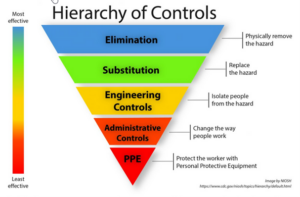By Chad Engle, Loss Prevention and Safety Manager
Beginning this month, and for the next four months, I’m going to discuss the different responsibilities and duties of a safety committee as outlined in NIRMA’s new Safety Committee Resource Handbook. Hardcopies of the Safety Committee Resource Handbook were distributed to attendees during a breakout session at the Self Defense for County Officials conference in October. Don’t worry, if you were unable to attend and pick up your county or agency’s copies, I would be happy to deliver them. I plan to distribute the remaining copies during my travels this winter and spring. If you would like to arrange a time to meet and go over the information in the new manual, please get in touch and we can set something up.
In the meantime, let’s talk about the responsibilities and duties of your safety committee. In my opinion the first and most important duty of a safety committee is that of Incident Review. The safety committee should review every incident, event or injury that did or could result in a claim. This involves near-misses. A near-miss is an incident in which an accident or injury was narrowly avoided, a situation that really could have turned out bad, but didn’t. Incidents should be reported to supervisors, the initial investigation of the incident is the responsibility of the involved employee’s supervisor. The investigation results should then be provided to the safety committee for review. A quarterly incident report is available to the safety committee chair on Origami Risk, NIRMA’s risk management information system or RMIS. To obtain access to Origami Risk, safety chairpersons should ask their contact person to reach out to Tod Thieman, NIRMA’s Senior Systems Engineer, and request a login and password. Once they have obtained the login and password, they will be able to download the quarterly incident report to ensure they review all incidents that occurred during the previous quarter.
After reviewing the investigation reports the safety committee is tasked with making recommendations intended to reduce the chance of reoccurrence. The recommendations should be made to the department head and other management staff as deemed appropriate. When considering recommendations, it helps to refer to the Hierarchy of Controls, they are arranged from most to least effective. Please see the NIOSH diagram below:

My last thought on Incident Review, do your best to avoid simply labeling an event “preventable” or “not preventable.” We’re going to operate under the assumption that all the events are preventable and brainstorm to see what we can change, within the Hierarchy of Controls, to reduce the chance that it ever happens again. When we label an event as “not preventable” we have all but given up. As always, I can be reached at chad@nirma.info and 800.642.6671 if you have any questions.

